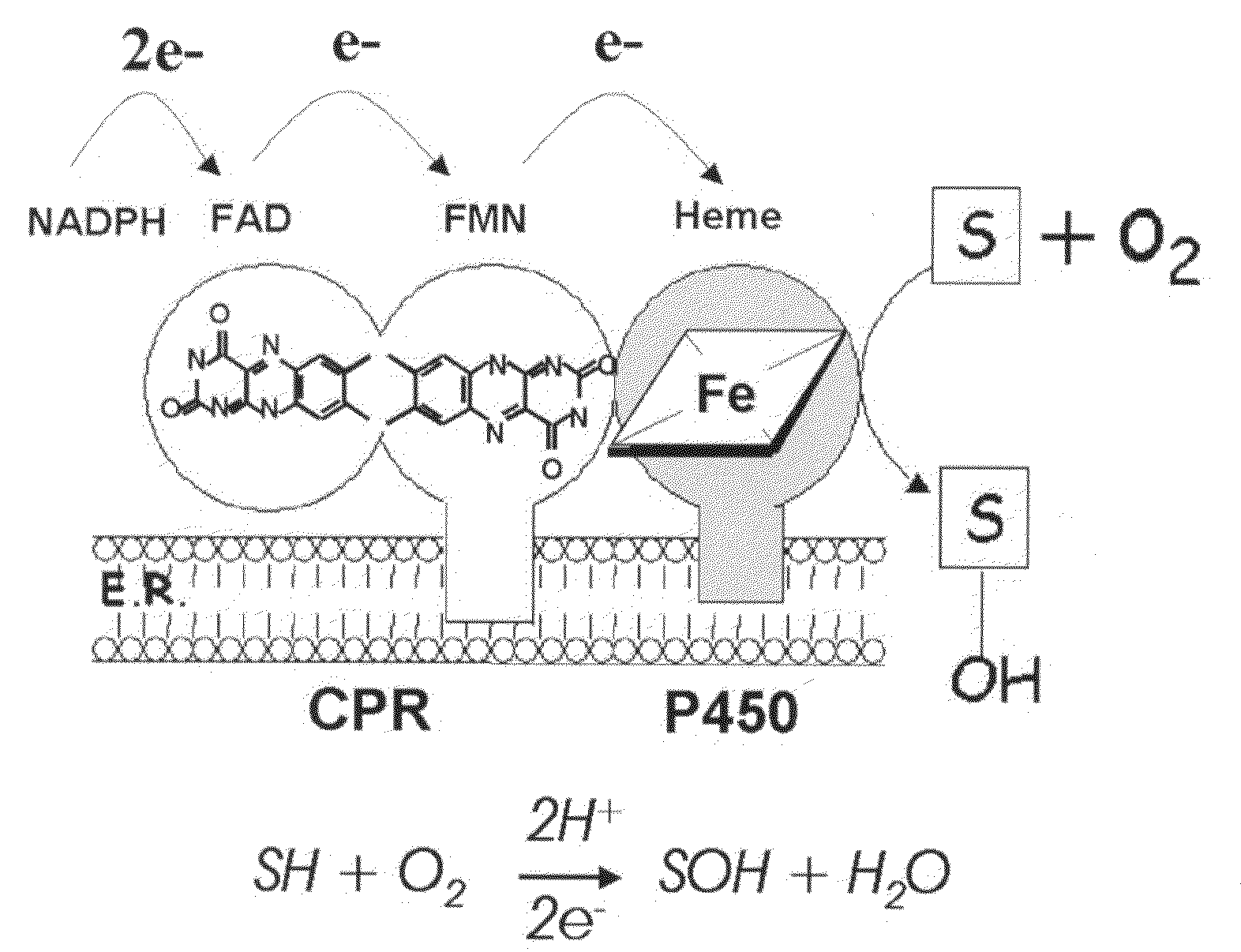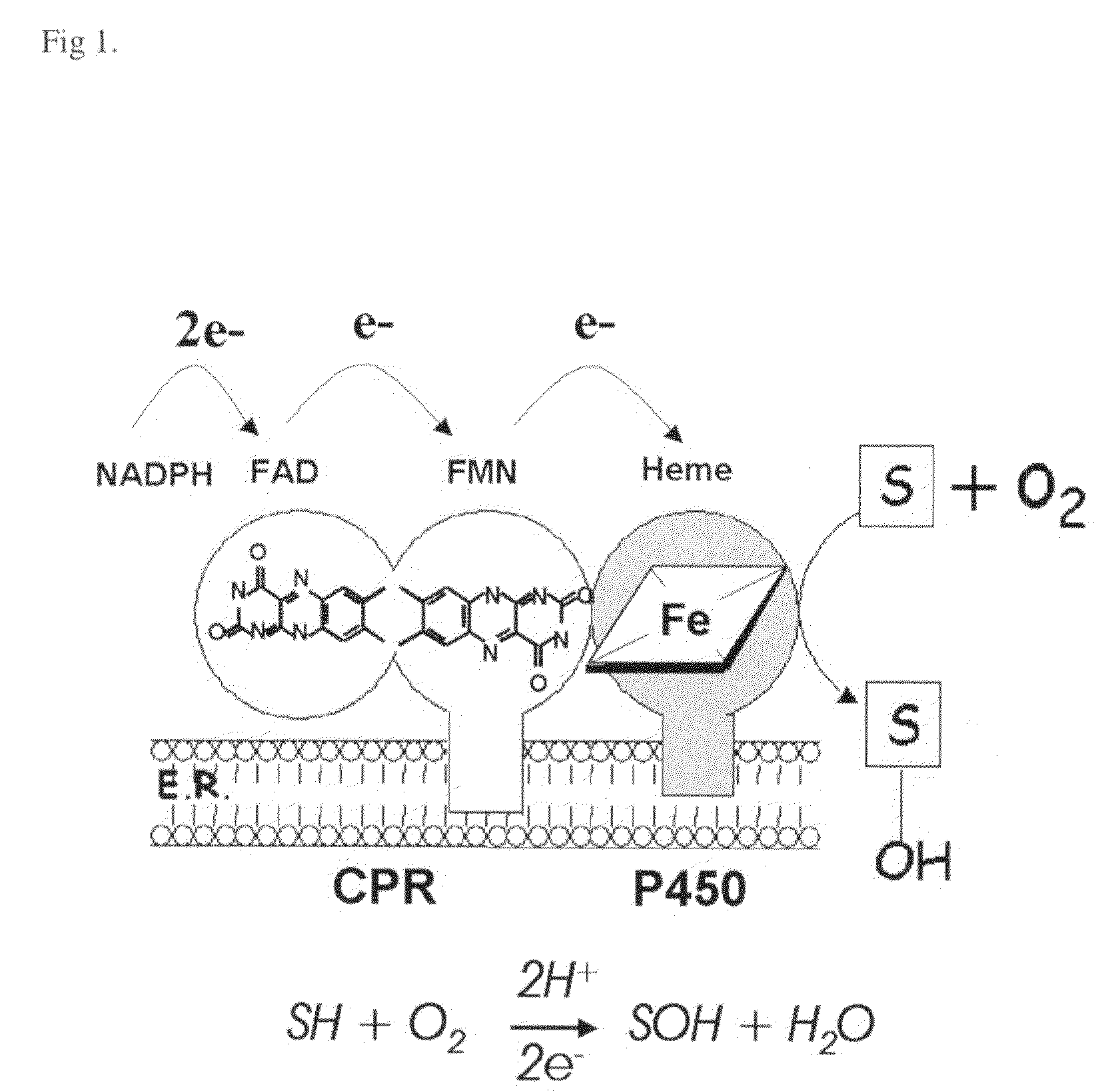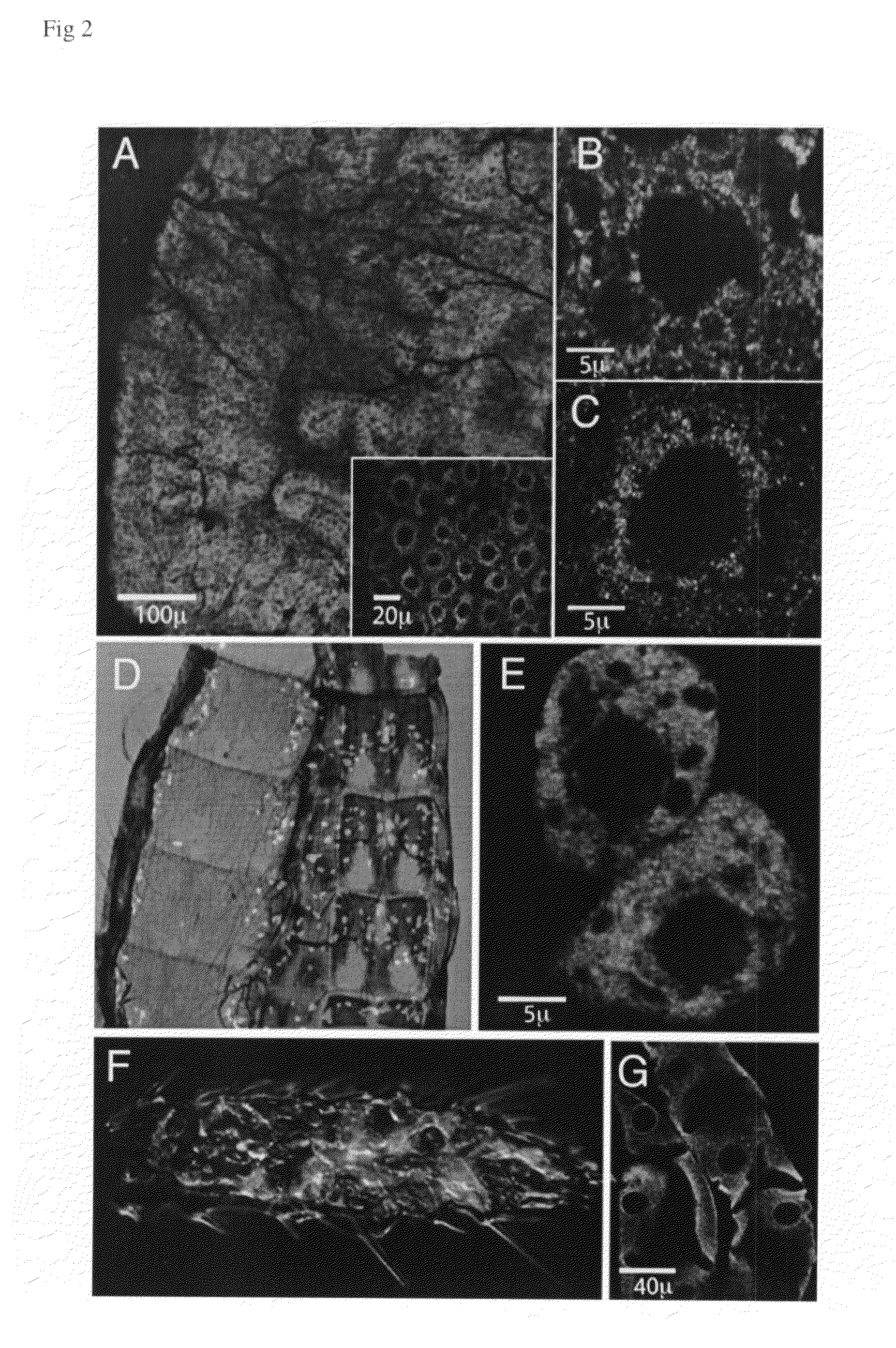Use of cytochrome P450 reductase as insecticidal target
a technology of cytochrome p450 and reductase, which is applied in the direction of enzymology, analogue computers for distribution networks, molecular structures, etc., can solve the problems of posing presenting a danger to organisms, and a danger to local animals and humans,
- Summary
- Abstract
- Description
- Claims
- Application Information
AI Technical Summary
Benefits of technology
Problems solved by technology
Method used
Image
Examples
example 1
CPR is Highly Abundant in Oenocytes
[0084]The tissue distribution of the P450 complex has been poorly described in mosquitoes. Using an affinity purified antibody against CPR, a peptide of the expected size was detected in A. gambiae extracts derived from dissected head (with appendages), gut (with Malphigian tubules), and the abdomen wall. CPR was only weakly detected in the thorax, which is largely comprised of muscle, fat body and salivary glands (not shown).
[0085]The same antibody revealed that the cellular distribution of CPR can be divided into three main tissues; antenna, midgut epithelia and oenocytes. In the head, staining was prominent in a subset of cells within the antennae (FIG. 2F), which is consistent with reported high levels of CPR in this organ in Drosophila melanogaster25. It has been proposed to be involved in the metabolism of chemical odorants, clearing the olfactory organ from accumulating chemicals. CPR was also observed in midgut epithelial cells (FIGS. 2A-C)...
example 2
CPR Knockdown in Oenocytes Correlates with Increased Permethrin Susceptibility
[0089]To facilitate CPR silencing, dsRNAs corresponding either to the CPR gene (dsCPR) or to the control green fluorescent protein, gene (dsGFP) were injected into 1-2 day old adults. These were allowed to recover for 4 days. No significant difference in survival was noted between experimental and control samples following injection and recovery (not shown). Western analysis of extracts taken from abdomen, gut and heads dissected from dsGFP and dsCPR treated mosquitoes indicted that CPR depletion was most efficient in the abdomen (−90%), with a smaller reduction evident in midgut extracts (−50%) and negligible differences in the head extracts (FIG. 3a). In whole mount abdomens, we also noted a strong reduction in CPR staining in oenocytes (FIG. 3b). We have thus established that CPR expression can be effectively knocked down in the abdomen, particularly in the oenocytes, allowing us to examine their role i...
example 3
Mosquito CPR Exhibits Distinctive Biochemical Differences in Relation to Fruit Fly and Human CPR
[0091]To further characterise A. gambiae CPR the present inventors compared the biochemical properties of the mosquito, fruit-fly and human enzymes. Since the A. gambiae CPR contains an NADPH binding domain23, it night be expected to be purified easily from whole fly extracts through affinity purification using 2′-5′-ADP Sepharose (2′-5′-ADP Sepharose interacts strongly with NADP+-dependent dehydrogenases and other enzymes which have affinity for NADP+ (Amersham-Pharmacia Biotech 1999 handbook on Affinity Chromatography: Principles and Methods, edition AB). However, comparison of the purification of crude 2′-5′-ADP binding proteins from crude extracts of A. gambiae and the closely related dipteran species D. melanogaster show that the mosquito CPR does not bind 2′-5′-ADP (FIG. 4) and is thus clearly different with respect to the molecular recognition of adenosine. Soluble forms (i.e. lack...
PUM
| Property | Measurement | Unit |
|---|---|---|
| volume | aaaaa | aaaaa |
| structures | aaaaa | aaaaa |
| three-dimensional structure | aaaaa | aaaaa |
Abstract
Description
Claims
Application Information
 Login to View More
Login to View More - Generate Ideas
- Intellectual Property
- Life Sciences
- Materials
- Tech Scout
- Unparalleled Data Quality
- Higher Quality Content
- 60% Fewer Hallucinations
Browse by: Latest US Patents, China's latest patents, Technical Efficacy Thesaurus, Application Domain, Technology Topic, Popular Technical Reports.
© 2025 PatSnap. All rights reserved.Legal|Privacy policy|Modern Slavery Act Transparency Statement|Sitemap|About US| Contact US: help@patsnap.com



